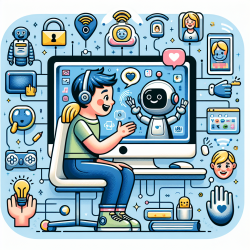As practitioners, our goal is to continuously improve our skills and methodologies to create the best outcomes for children with autism spectrum disorder (ASD). A recent review titled Computer- and Robot-Assisted Therapies to Aid Social and Intellectual Functioning of Children with Autism Spectrum Disorder by DiPietro et al. (2019) provides compelling evidence on the effectiveness of technology-driven interventions in enhancing social skills in children with ASD.
Key Findings from the Research
The review identifies two primary types of technology platforms being evaluated: robot-assisted interventions and serious computer games. Both have shown promising results in improving various social skills among children with ASD.
Robot-Assisted Interventions
- Robots like NAO and KiliRo have been used to engage children in social interactions, with studies showing improvements in communication and social attention.
- For instance, a study by Srinivasan et al. demonstrated that rhythm-based and robot interventions improved social attention patterns in children with ASD.
- Another study by Huskens et al. used LEGO® therapy mediated by robots to improve collaborative play behaviors among children with ASD and their siblings.
Serious Computer Games
- Computer games designed for educational purposes have been effective in teaching social skills and improving cognitive functions.
- Rice et al. found that FaceSay™, a computer software program, significantly improved emotion recognition and social skills in children with ASD.
- Khowaja et al. used a serious game to teach vocabulary, resulting in improved retention and learning among participants.
Practical Implementation for Practitioners
To leverage these findings, practitioners can integrate computer- and robot-assisted therapies into their existing programs. Here are some actionable steps:
- Assess Individual Needs: Evaluate the specific social skills and cognitive challenges of each child to tailor the interventions accordingly.
- Incorporate Technology: Use robot-assisted interventions like NAO for activities that require social interaction and attention. Implement serious computer games to enhance cognitive functions and social skills.
- Monitor and Adapt: Continuously monitor the child's progress and adapt the interventions based on their responsiveness and improvement.
- Collaborate: Work with multidisciplinary teams, including speech therapists, occupational therapists, and educators, to provide a holistic approach to therapy.
Encouraging Further Research
While current studies show promising results, more research is needed to establish the long-term effectiveness and cost-efficiency of these interventions. Practitioners are encouraged to participate in or conduct further research to explore these innovative therapies' full potential.
To read the original research paper, please follow this link: Computer- and Robot-Assisted Therapies to Aid Social and Intellectual Functioning of Children with Autism Spectrum Disorder.










